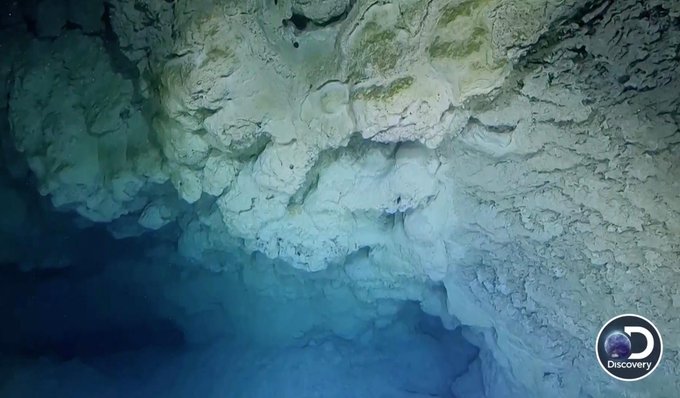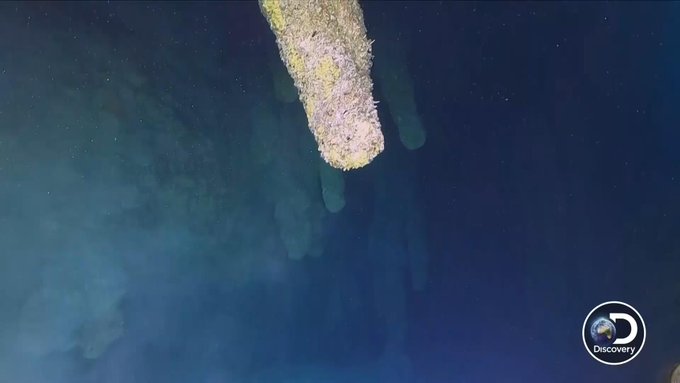Richard Branson Dived 124 Meters Into The World's Second-Biggest Sinkhole And Made An Unprecedented Discovery
Located about 70 kilometers off the coast of Belize City, the Great Blue Hole is the world's deepest underwater sinkhole, after the Dragon Hole in China.
As well as being a sizeable sinkhole, the structure is situated right in the center of the world's second-largest coral reef, the Belize Barrier Reef, and is a UNESCO World Heritage site.
Made famous by a 1971 documentary with marine researcher Jacques Cousteau, the Great Blue Hole has been a popular spot for recreational divers ever since, but not much was known about the origins of the mysterious place.
However, entrepreneur and philanthropist Richard Branson joined a team of scientists and divers to change that.
From above, the view is beautiful, but there isn't really much of a view of the potential wonders at the bottom. It consists of a round, dark circle surrounded by a ring of turquoise water and a coral reef.
With a diameter of 318 meters and a depth of around 124 meters, the Great Blue Hole is one of the largest undersea sinkholes in the world.
To give you a better idea of the sinkhole's dimensions, two Boeing 724 planes would fit into the hole quite nicely.
Cousteau's grandson, Fabien Cousteau, joined the British entrepreneur and marine-conservation activist Richard Branson to explore the underwater cave in a submarine, as part of an expedition by Aquatica Submarines.
Last Sunday, spectators from all over the world were able to watch the livestream of the expedition.
Together with a team of scientists, marine researchers, divers, and filmmakers from the Aquatica Foundation, Branson and Cousteau dived to the bottom of the sinkhole several times — they're the first-ever team to not only dive that deep, but to have also captured high-resolution images and produced detailed 3D maps of the hole's interior.
The aim is to raise awareness of marine conservation
The team was also looking to collect and analyze scientific data on water quality and the bacteria living there.
One feature that could be of particular interest in future studies is the low-oxygen layer above the seabed. It may contain evidence of environmental influences that led to the decline of the Mayan civilization between 800 and 1,000 AD.
During their expedition, the group made an exciting new discovery about the Great Blue Hole which might provide further insight into its origins — the team said it had found evidence the structure hadn't always been an underwater hole.
On the south wall of the hole, there is now access to a cave system below sea level, where the team was able to photograph large stalactites.
These are clear evidence of the Great Blue Hole having previously been a cave system, as stalactites only grow in dry caves.
Branson said this is evidence that sea levels were once much lower, and rose dramatically due to climate change.






No comments